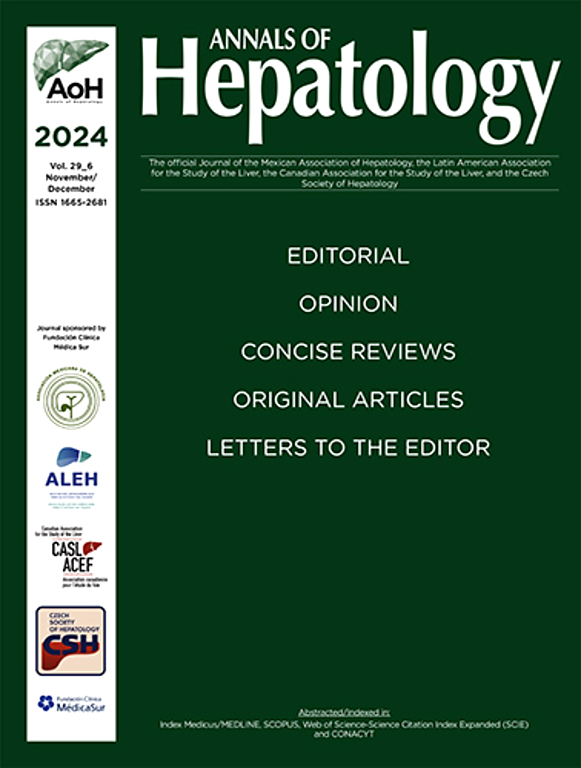开发基于机器学习的模型并进行外部验证,以预测 MASLD 人口中的前肌少症:来自 2017-2018 年 NHANES 的结果。
IF 4.4
3区 医学
Q2 GASTROENTEROLOGY & HEPATOLOGY
引用次数: 0
摘要
引言与目的:随着代谢功能障碍相关性脂肪性肝病(MASLD)中 "前肌肉疏松症 "患病率的上升,本研究旨在开发和验证基于机器学习的模型,以识别MASLD人群中的 "前肌肉疏松症":从2017-2018年全国健康与营养调查中筛选出571名MASLD受试者。这批受试者按 7:3 的比例随机分为训练集和内部测试集。从我院收集的66名MASLD受试者作为外部验证集。四个二元分类器,包括随机森林(Random Forest,RF)、支持向量机、极梯度提升和逻辑回归,被用于识别前肌肉疏松症。表现最佳的模型在外部验证集中得到进一步验证。模型的性能通过辨别和校准进行评估。沙普利加性解释用于模型的可解释性:结果:在 NHANES 队列和外部验证集中,肌少症前期发病率分别为 17.51% 和 15.16%。RF模型的接收者操作特征曲线下面积(AUROC)为0.819(95%CI:0.749,0.889),优于其他模型。当根据变量的重要性保留六个排名靠前的特征时,包括体重调整后的腰围、性别、种族、肌酐、教育程度和碱性磷酸酶,最终的 RF 模型在内部和外部验证集中的接收操作特征曲线下面积分别为 0.824(0.737,0.910)和 0.732(95%CI:0.529,0.936)。灵敏度分析证明了模型的稳健性。校准曲线和决策曲线分析证实了良好的校准能力和临床应用:本研究利用可解释的机器学习算法提出了一个用户友好型模型,用于预测 MASLD 群体中的前肌肉疏松症。该研究提供了一种基于网络的工具,用于在社区和住院环境中筛查肌少症前期。本文章由计算机程序翻译,如有差异,请以英文原文为准。
Development and external validation of a machine-learning based model to predict pre-sarcopenia in MASLD population: Results from NHANES 2017–2018
Introduction and Objectives
With rising prevalence of pre-sarcopenia in metabolic dysfunction-associated steatotic liver disease (MASLD), this study aimed to develop and validate machine learning-based model to identify pre-sarcopenia in MASLD population.
Materials and Methods
A total of 571 MASLD subjects were screened from the National Health and Nutrition Examination Survey 2017–2018. This cohort was randomly divided into training set and internal testing set with a ratio of 7:3. Sixty-six MASLD subjects were collected from our institution as external validation set. Four binary classifiers, including Random Forest (RF), support vector machine, and extreme gradient boosting and logistic regression, were fitted to identify pre-sarcopenia. The best-performing model was further validated in external validation set. Model performance was assessed in terms of discrimination and calibration. Shapley Additive explanations were used for model interpretability.
Results
The pre-sarcopenia rate was 17.51 % and 15.16 % in NHANES cohort and external validation set, respectively. RF outperformed other models with area under receiver operating characteristic curve (AUROC) of 0.819 (95 %CI: 0.749, 0.889). When six top-ranking features were retained as per variable importance, including weight-adjusted waist, sex, race, creatinine, education and alkaline phosphatase, a final RF model reached an AUROC being 0.824 (0.737, 0.910) and 0.732 (95 %CI: 0.529, 0.936) in internal and external validation sets, respectively. The model robustness was proved in sensitivity analysis. The calibration curve and decision curve analysis confirmed a good calibration capacity and good clinical usage.
Conclusions
This study proposed a user-friendly model using explainable machine learning algorithm to predict pre-sarcopenia in MASLD population. A web-based tool was provided to screening pre-sarcopenia in community and hospitalization settings.
求助全文
通过发布文献求助,成功后即可免费获取论文全文。
去求助
来源期刊

Annals of hepatology
医学-胃肠肝病学
CiteScore
7.90
自引率
2.60%
发文量
183
审稿时长
4-8 weeks
期刊介绍:
Annals of Hepatology publishes original research on the biology and diseases of the liver in both humans and experimental models. Contributions may be submitted as regular articles. The journal also publishes concise reviews of both basic and clinical topics.
 求助内容:
求助内容: 应助结果提醒方式:
应助结果提醒方式:


